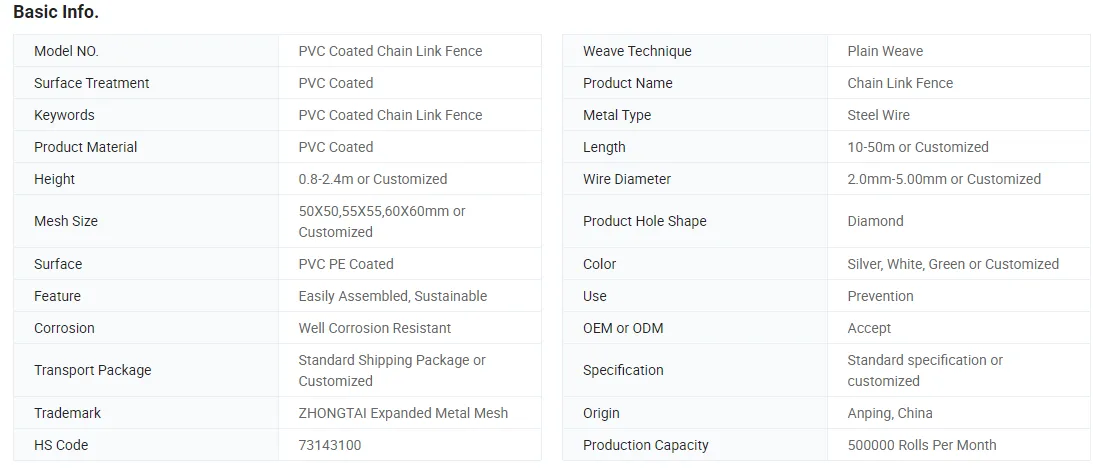Understanding Flat Bar Grating A Comprehensive Guide
Flat bar grating is an essential component used in various industrial applications, particularly in construction and engineering. This type of grating is made from flat bars, which are typically formed from steel or aluminum, and is designed to provide a robust, durable surface for various applications, including flooring, walkways, and platforms. This article explores the characteristics, advantages, applications, and installation of flat bar grating.
Characteristics of Flat Bar Grating
Flat bar grating consists of parallel flat bars that are welded or otherwise joined together at regular intervals. The distance between the bars can vary based on the application and the load requirements. The main characteristics of flat bar grating include
1. Material Composition It is commonly made from metals such as steel, aluminum, or stainless steel, depending on the environmental conditions and load-bearing requirements.
2. Strength and Durability Flat bar grating is designed to withstand heavy loads, making it suitable for industrial environments. The load-bearing capacity can be customized based on the spacing and thickness of the bars.
3. Versatility This type of grating can be used in various forms, whether as flooring, catwalks, or even decorative elements, offering flexibility for designers and engineers.
4. Corrosion Resistance Depending on the material chosen, flat bar grating can be treated or coated to increase resistance to corrosion, making it suitable for outdoor applications or environments exposed to moisture and chemicals.
Advantages of Flat Bar Grating
The use of flat bar grating presents several advantages
1. Safety Flat bar grating provides a secure walking surface, minimizing slip hazards in industrial areas. The open design also allows for good drainage of liquids, reducing the risk of pooling and subsequent slipping incidents.
2. Cost-Effectiveness Due to its durability, flat bar grating can reduce long-term maintenance costs. Its longevity in harsh environments means fewer replacements and repairs over time.
3. Easy Installation Flat bar grating is relatively straightforward to install, often requiring minimal tools and labor. Pre-fabricated options are available, allowing for quick assembly on-site.
4. Customizability Manufacturers can customize flat bar grating to meet specific dimensions and load requirements, making it suitable for a wide range of applications.
flat bar grating

Applications of Flat Bar Grating
Flat bar grating is used extensively across various industries
1. Industrial Facilities In manufacturing plants and factories, flat bar grating is often used for platforms, walkways, and stair treads, providing a safe surface for workers and equipment.
2. Architectural Features In modern architecture, flat bar grating can be used for decorative purposes, creating visually appealing features in buildings, such as railings and facades.
3. Transportation Flat bar grating is used in bridges, walkways, and transit systems where a combination of strength and lightweight construction is required.
4. Water Treatment and Waste Management The corrosion-resistant properties of certain materials make flat bar grating ideal for use in waste treatment facilities and other environments where exposure to chemicals and moisture is a concern.
Installation of Flat Bar Grating
The installation of flat bar grating typically involves several key steps
1. Site Preparation Ensure that the installation area is clean and free of debris. Evaluate the structure for load distribution and support beams.
2. Cutting and Customization If necessary, cut the flat bars to the desired length and shape based on the application requirements.
3. Securing the Grating Employ appropriate fastening methods, such as welding or bolting, to secure the grating in place. Ensure that all joints are tight and that there is no movement in the structure.
4. Final Inspection After installation, conduct a thorough inspection to ensure all components are secure and meet safety standards before putting the grating into service.
In conclusion, flat bar grating is a vital solution for many industrial and architectural needs. Its strength, versatility, and durability make it an ideal choice for various applications, ensuring safety and efficiency in both manufacturing environments and public spaces. As industries continue to innovate, the importance and applications of flat bar grating are likely to expand, presenting new opportunities for design and functionality.
-
Why Galvanized Trench Cover Steel Grating Resists Corrosion
NewsJul.10,2025
-
The Versatility and Strength of Stainless Expanded Metal Mesh
NewsJul.10,2025
-
Load Calculations in Steel Grating Platforms
NewsJul.10,2025
-
Keeping Pets and Kids Safe with Chicken Wire Deck Railing
NewsJul.10,2025
-
Hole Diameter and Pitch for Round Perforated Metal Sheets
NewsJul.10,2025
-
Aluminium Diamond Mesh in Modern Architecture
NewsJul.10,2025
Subscribe now!
Stay up to date with the latest on Fry Steeland industry news.

